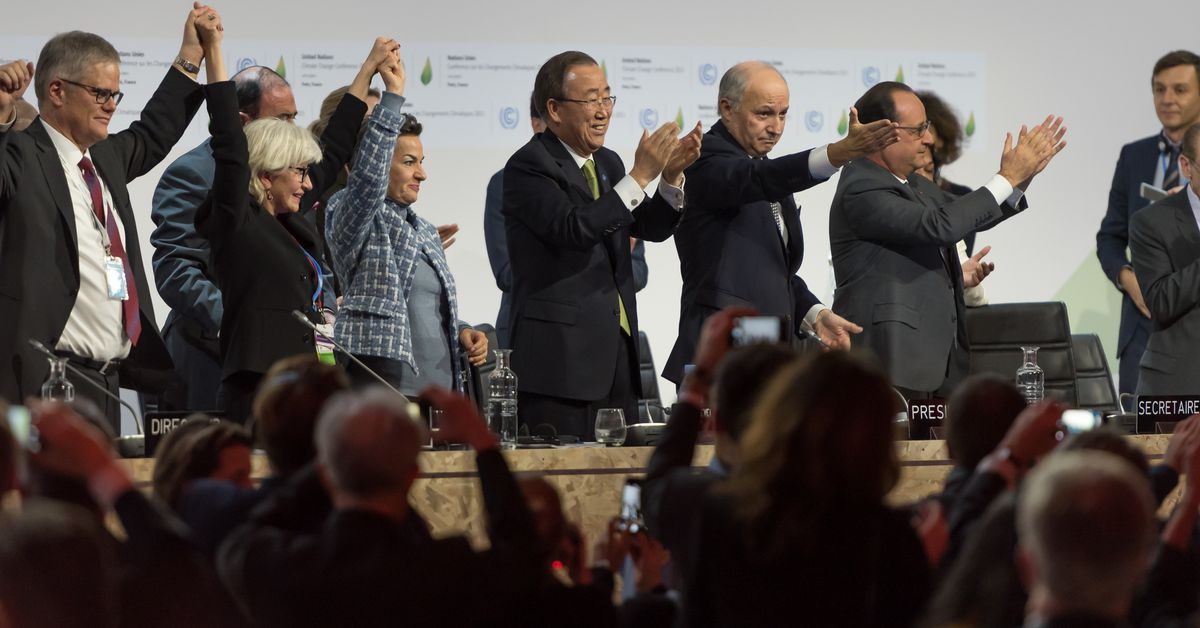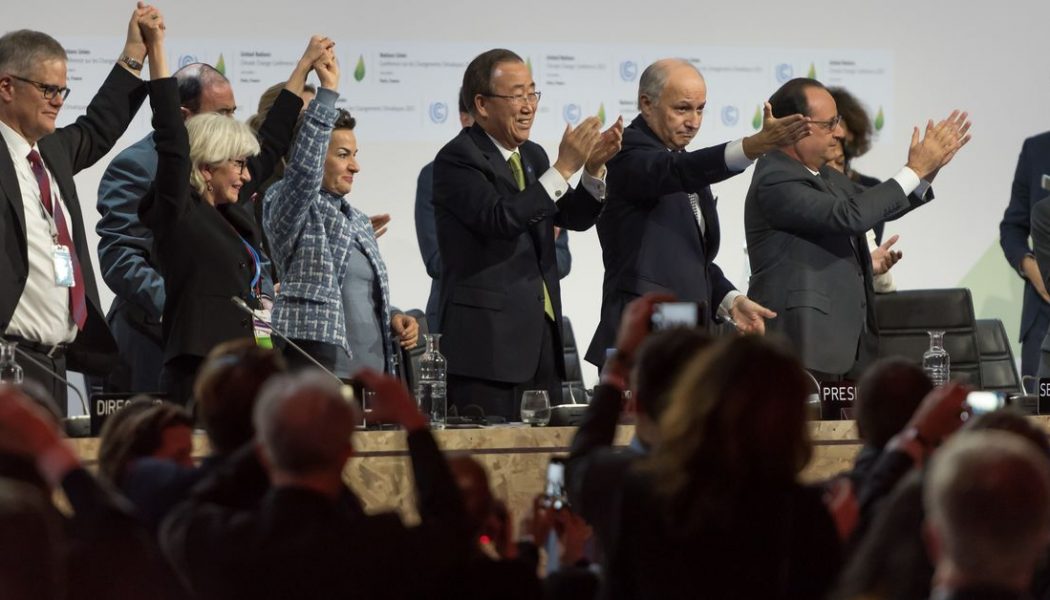
The US will formally leave the landmark Paris climate agreement on November 4th, turning its back on the rest of the world as it comes together to stop climate change. How quickly the US takes on the planetary crisis will hinge on the results of today’s election.
The Paris Agreement entered into force nearly four years ago today, on November 4th, 2016, after being adopted by every nation on Earth. (There are still a handful of countries that have yet to formally ratify the agreement). Donald Trump moved to remove the US from the accord soon after taking office, but the process took four years. That process comes to an end tomorrow, as voters wait to find out who the next US president will be.
If it’s Joe Biden, Americans can expect the US to rejoin the accord next year, which would likely set into motion herculean efforts to slash greenhouse gases. If Trump is still president, the US is probably in for another four years of his administration derailing federal and international attempts to tackle the climate crisis.
“Obviously, if Trump remains in office, then the US will be an outlier. It will be an outcast of the UN climate system as the rest of the world moves forward,” says Michael Gerrard, founder and faculty director of Columbia University’s Sabin Center for Climate Change Law.
The longer the US stays out of the agreement, the harder it will become to re-engage. “The US would certainly have lost the trust of the international community; that’s already happened to a certain extent,” says Gerrard. “So it becomes even more difficult for the US to participate in any international mechanisms to fight climate change.”
Trump’s decision to back out of the Paris accord because it posed an “economic burden” has already cut into the world’s efforts to fight climate change. His administration reneged on a $2 billion commitment to the Green Climate Fund, which helps developing countries take on projects to lower emissions and adapt to new threats posed by climate change. What made the Paris accord groundbreaking in the first place was that it got the whole world on the same page about climate change. Previous attempts like the Kyoto Protocol ultimately failed to rope in the biggest polluters. Now, the US has backed off again. Currently, the US is the second biggest contributor to global warming after China, and when you add up its historical carbon contributions, the US is at the very top of the list.
The US initially committed to cutting its emissions between 26 to 28 percent below 2005 levels by 2025 after it signed onto the Paris accord. Instead of working to meet that goal, Trump’s administration has rolled back about 100 environmental regulations and gutted agencies tasked with protecting the US’s natural resources. He replaced the Obama-era Clean Power Plan with a weaker rule that could actually lead to even more pollution.
States, cities, and companies in the US are trying to make up for Trump’s actions. That could cut the country’s emissions by 19 percent by 2025, according to an initiative called America’s Pledge that formed in response to Trump leaving the Paris accord. The pandemic has also cut into carbon dioxide emissions. But there’s a long way to go for the US to take adequate measures to meet the scale of the climate problem.
Joe Biden promised to quickly rejoin the Paris agreement if he becomes president. All he has to do is send a letter to the secretary general of the United Nations, and the US would be back in after 30 days. What comes next is a longer, harder game of playing catch-up. Under the Paris Agreement, countries are due to boost their climate commitments next year. Biden’s administration would have to hustle to submit an even more ambitious plan than the one the US failed to deliver on over the past four years.
Biden has the most ambitious climate plan of any Democratic or Republican nominee for president ever. He wants to get rid of all pollution from the power sector by 2035 and get the US on track for an entirely “clean energy economy” by 2050. It’s in line with the goals of the Paris Agreement, which is to keep global average temperatures “well below” a dangerous tipping point — two degrees Celsius above preindustrial levels. Greenhouse gas emissions need to plummet to zero by around 2050 to stay well below that tipping point, according to the United Nations Intergovernmental Panel on Climate Change.
If Biden wins, making good on his sweeping $2 trillion plan would necessitate a lot of new legislation, which makes the outcome of congressional races pretty important for the climate, too. “Control of Congress is extremely important to full blown action on climate change,” Gerrard says. If Democrats don’t gain control of Congress, Biden could still take actions without Congress, like Obama did with his Clean Power Plan — but these are more vulnerable to legal challenges and rollbacks in the future.
“You absolutely need the federal government to re-engage to get anywhere close to net-zero [emissions] by 2050. And you really do need the US to rejoin Paris,” says Andrew Light, director of the Institute for Philosophy and Public Policy at George Mason University. He also served as a State Department senior climate change official who negotiated the Paris Agreement in 2015.
In the meantime, Americans are already seeing more vicious wildfire seasons and rapidly intensifying hurricanes — all signs that climate change is moving forward even if US action on the problem is not.










